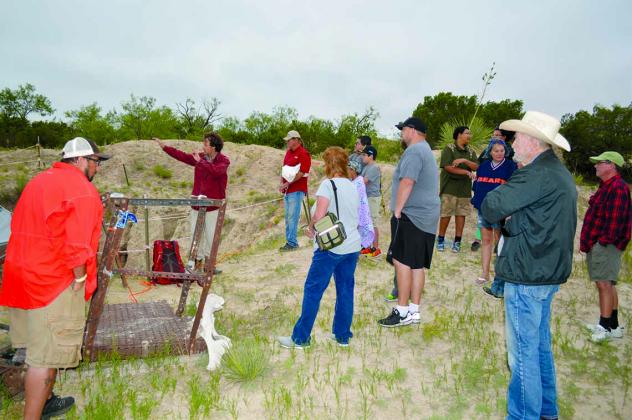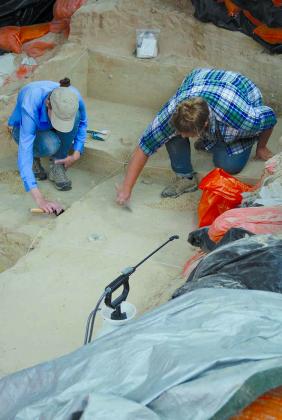About 11 miles east of Snyder is an ancient stream deposit that rests on the acreage of Roland Springs Ranch.
It is here that animal bones dating back to the beginning of the Ice Age about 2.6 million years ago were discovered, making this location a paleontological dig site for the Lubbock Lake Landmark Museum of Texas Tech University.
“The stream is really what preserved the bones,” graduate assistant John Moretti said. “For bones to be preserved, they have to be buried very quickly. The stream collected the animal bones and preserved them for us.”
The dig site has been under excavation since 2005 and has produced remains from extinct species that are predecessors to animals that we know today.
“We’ve been doing really good in the small mammal department this year,” Moretti said. “The most common thing that we find are extinct giant tortoises.”
Although there is enough information about the dig site to write a book, Moretti said that the only publication currently in progress is a series of peer-reviewed journals. The next journal will be about rabbits and is expected to be out before the end of the year.
“At this time period, we find more rabbit species living together than any other time since,” Moretti said. “Here, we find five species, and we find the direct ancestors of our cottontails and jack rabbits.”
The Scurry County Museum has been hosting tours of the dig site over the last two weekends, and will hold its final two tours on Saturday at 8 a.m. and 10 a.m.
After learning about the process for unearthing bones, tour participant Leroy Ochoa commented that the process is “so neat.”
“Because it’s so meticulous and time-consuming, you have to love what you’re doing,” Ochoa said. “You have to have a heart for it.”
The excavation process requires a set of small tools and each step of the process is recorded thoroughly for both present and future reference.
“It’s a place that future researchers will have to know about,” Moretti said. “This place is really special, it’s important, and it’s something to be proud of for this area.”



